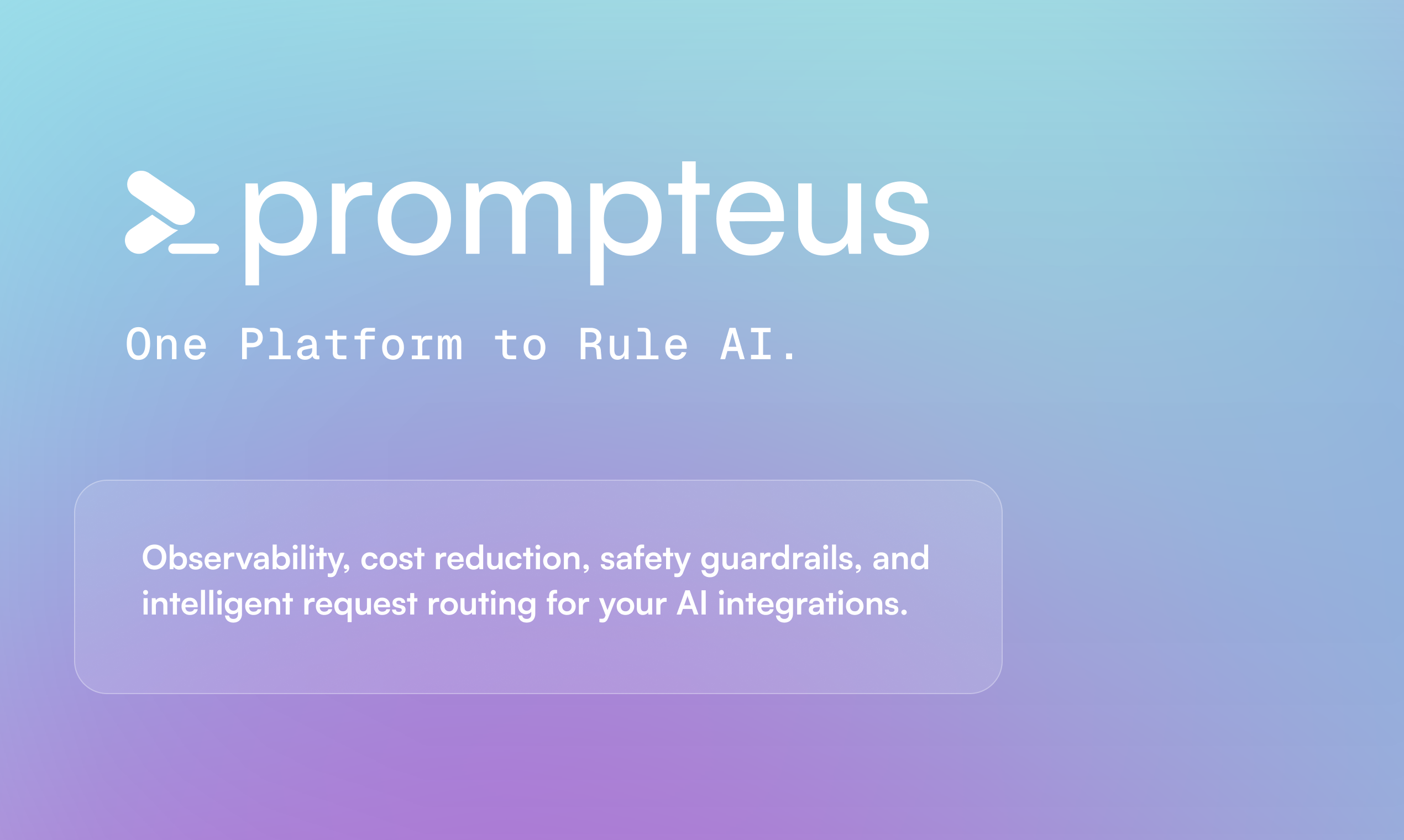
Table of Contents
Overview
In the rapidly evolving landscape of artificial intelligence, building and managing AI workflows can be a complex and daunting task. Prompteus emerges as a no-code platform designed to simplify this process, empowering teams to create, deploy, and scale AI solutions without the need for extensive coding expertise. With its focus on multi-LLM orchestration, adaptive caching, and built-in compliance guardrails, Prompteus aims to make AI development accessible, cost-effective, and secure for enterprises of all sizes. Let’s dive into what makes Prompteus a contender in the AI tool arena.
Key Features
Prompteus boasts a range of features tailored to streamline AI workflow development and management:
- No-code editor: Build AI workflows visually with a drag-and-drop interface, eliminating the need for coding.
- Multi-LLM orchestration: Seamlessly integrate and manage multiple Large Language Models (LLMs) within your workflows, choosing the best model for each task.
- Adaptive caching: Optimize performance and reduce costs with intelligent caching that adapts to usage patterns.
- Compliance guardrails: Ensure responsible and compliant AI deployments with built-in controls and monitoring.
- Scalable deployment: Easily scale your AI workflows to handle increasing workloads and user demands.
How It Works
Prompteus simplifies AI workflow creation through its intuitive no-code editor. Users can drag and drop various components, such as LLMs, data connectors, and custom logic blocks, to build their desired workflows. Prompteus then handles the complexities of LLM routing, ensuring that the right model is used for each task. Furthermore, the platform’s adaptive caching mechanism optimizes performance by storing frequently accessed data, reducing latency and costs. Built-in compliance controls and monitoring ensure that workflows are executed safely and responsibly. This entire process is designed to be accessible to non-developers, allowing subject matter experts to directly contribute to AI solution development.
Use Cases
Prompteus can be applied to a wide variety of use cases across different industries:
- Enterprise AI process automation: Automate repetitive tasks and streamline business processes using AI-powered workflows.
- AI prototype development: Quickly prototype and test new AI ideas without writing code, accelerating innovation.
- Workflow optimization for support or analytics: Enhance customer support and gain deeper insights from data through optimized AI workflows.
Pros & Cons
Like any tool, Prompteus has its strengths and weaknesses. Understanding these can help you determine if it’s the right fit for your needs.
Advantages
- Easy for non-devs: The no-code interface makes AI development accessible to users without coding experience.
- Compliance-friendly: Built-in compliance guardrails help ensure responsible and ethical AI deployments.
- Scalable: The platform is designed to handle increasing workloads and user demands.
Disadvantages
- Limited flexibility vs. code-first tools: The no-code approach may limit flexibility for complex or highly customized workflows.
- Dependent on platform uptime: Users are reliant on the Prompteus platform for uptime and availability.
How Does It Compare?
When evaluating Prompteus, it’s important to consider its competitors. Here’s a brief comparison:
- Flowise: Similar no-code approach, but Prompteus offers more mature caching capabilities.
- Pipedream: Broader integration focus, but less specialized for AI workflows compared to Prompteus.
Final Thoughts
Prompteus offers a compelling solution for teams looking to embrace AI without the complexities of traditional coding. Its no-code interface, combined with features like multi-LLM orchestration and compliance guardrails, makes it a strong contender for enterprise AI process automation and prototype development. While it may not offer the same level of flexibility as code-first tools, its ease of use and focus on scalability make it a valuable asset for organizations seeking to democratize AI development.

